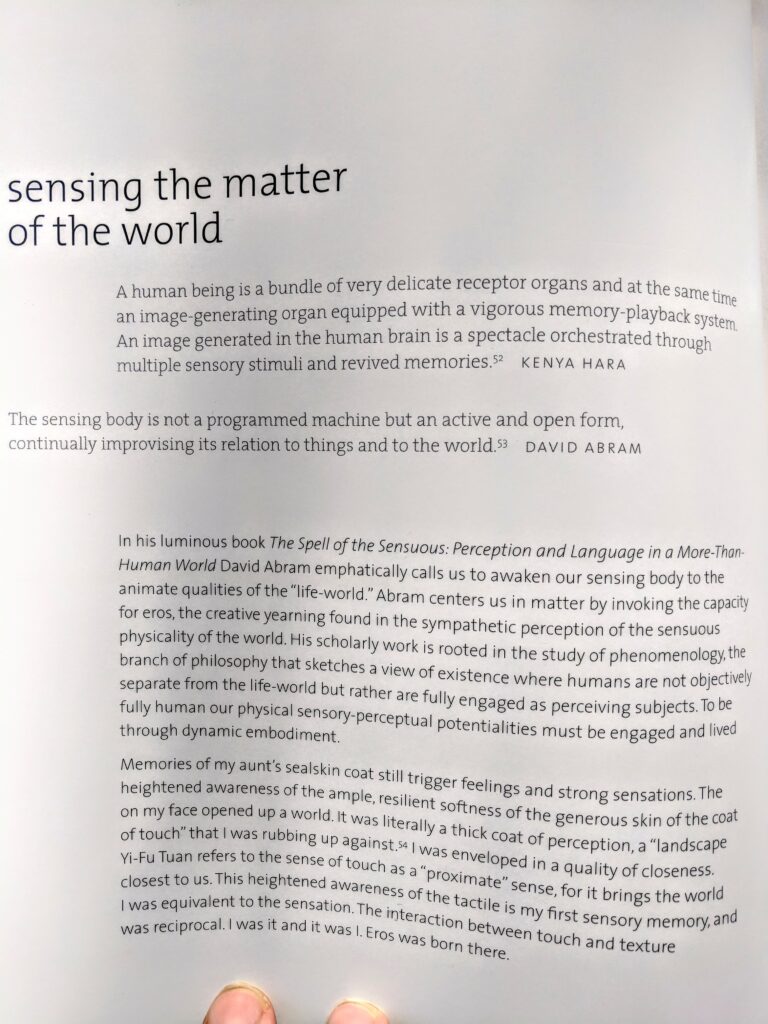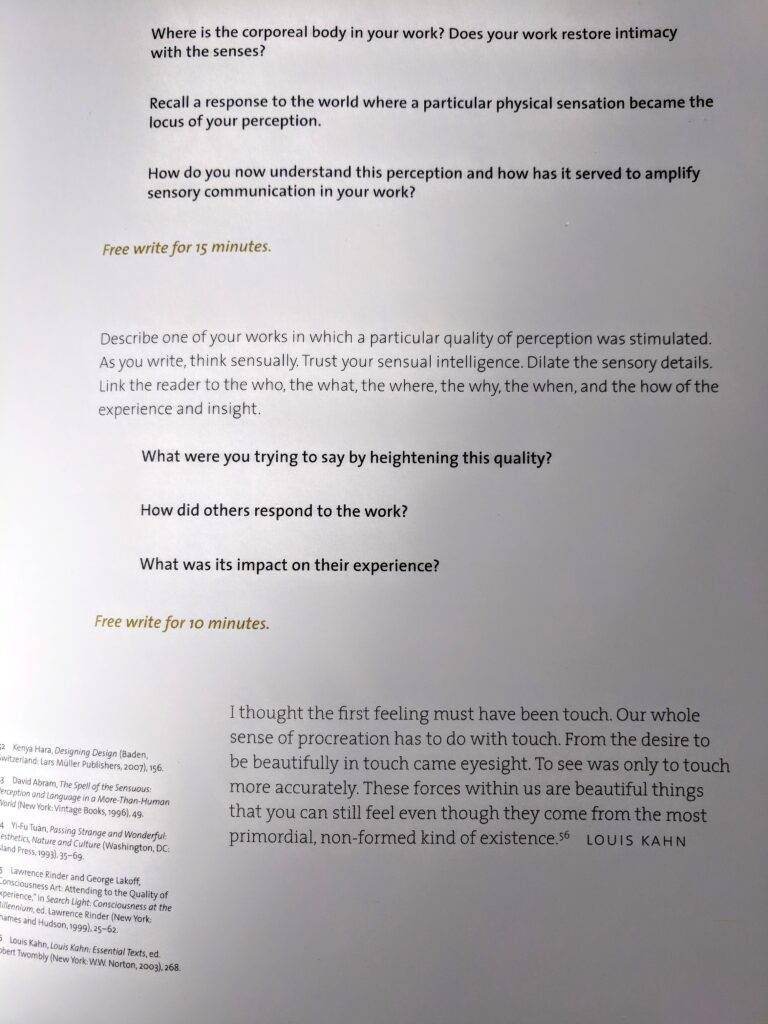Corporeal Stimulation
I often struggle to imagine my life in corporeal terms at all, let alone allow them to define an experience. My reaction to touch ranges from startled recoil to endured discomfort. I prefer dark, quiet places and respond poorly to bright lights and loud noises. I struggle to experience flavor and I imagine scent primarily as a tool to keep me from ingesting rotten food, or perhaps as a method to locate organic materials. I do have a very keen sense of balance. I can detect very slight inclines of surfaces where I stand or sit, and I often find it difficult to relax or sleep if I lie with my head even a few millimeters lower than my hips.
So it’s not easy for my to identify the corporeal in my work. For a long time I sought to exclude it entirely, working purely in cognitive expression, creating and iterating discrete copies from memory and allowing them to expire at the end of a session when its transient embodiment expired.
At the time imagined it as a protection from loss, or perhaps a method to cope with it. This instance of the work is merely a copy of the original in my mind, something I can reproduce precisely and which cannot be removed from me. Earlier today I said “procedures cannot be confiscated” and I definitely came to that thinking through work like this. Through work I defined in a way that lacked embodiment, expressed in a medium I intended to destroy before it was observed by anyone else.
And at the same time it was work defined by its repeated incorporation, and by the physical ritual required to manifest it. Work that was immortal and immaterial in my mind that dwelled there as memory and hope, but which literally could not live – could not even be accurately imagined – until I used my body to give it form.
Likewise it’s difficult for me to identify memory by physical sensation, as my brain is not (yet) indexed in a way that allows access by such reference. But there are emotional queues that I can use to drive at somatic responses. Sensory perception triggered internally is still muted, but not to nearly the same degree as my direct observation. And it is a thing I use in my modern work. The clenching and bile of disgust and revoltion, the cold and slippery nature of isolation and loneliness, the tension and tinnitus of anxiety. I can see my brain go spikey when it needs to retreat and I can hear it smooth back into shape when I finally find relief. My work is often explicitly introspective, pulling thinks and my feels out through my hands, and the sensations it inherits are similarly internal.
I think it often works, the process in which I induce a somatic reponse in others. People sometimes respond in a viseral way. Are overwhelmed by the presence of their feels when I pull them into the space where mine live. But it also makes my work troublesome to consume, and frequently stunts any more subtle response.
It would probably be useful both in my life and my work to better experience the world I can sense and not merely the one I can cognitively model.
ZiB
—
Sent from a phone.

